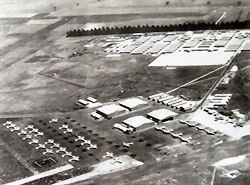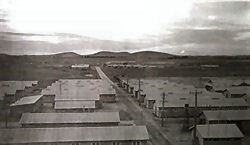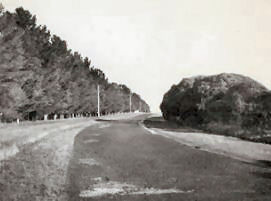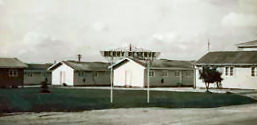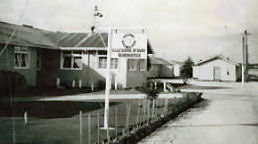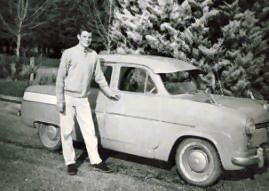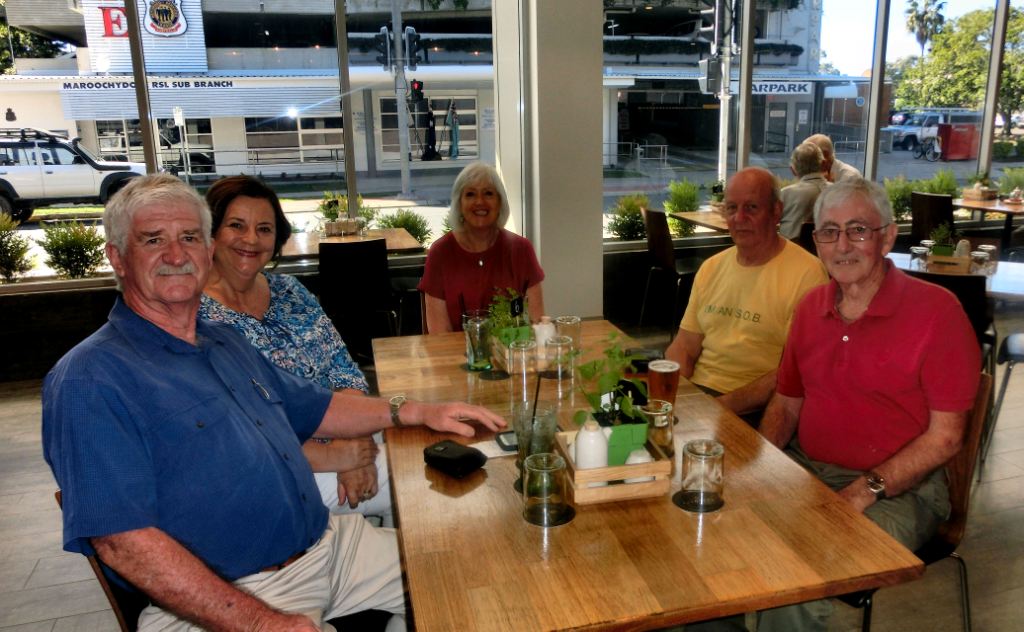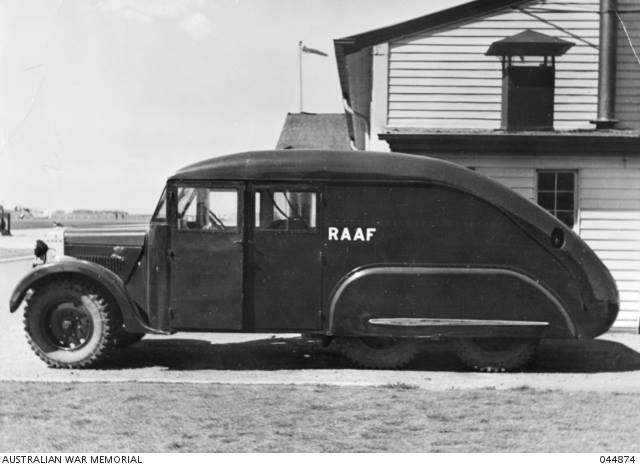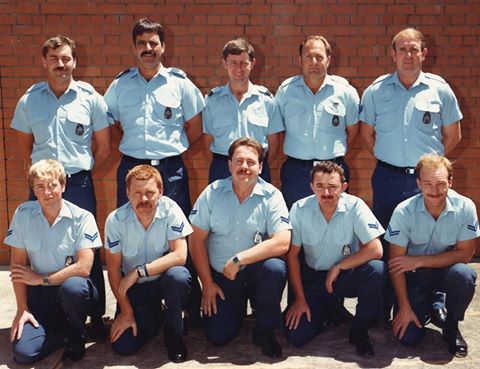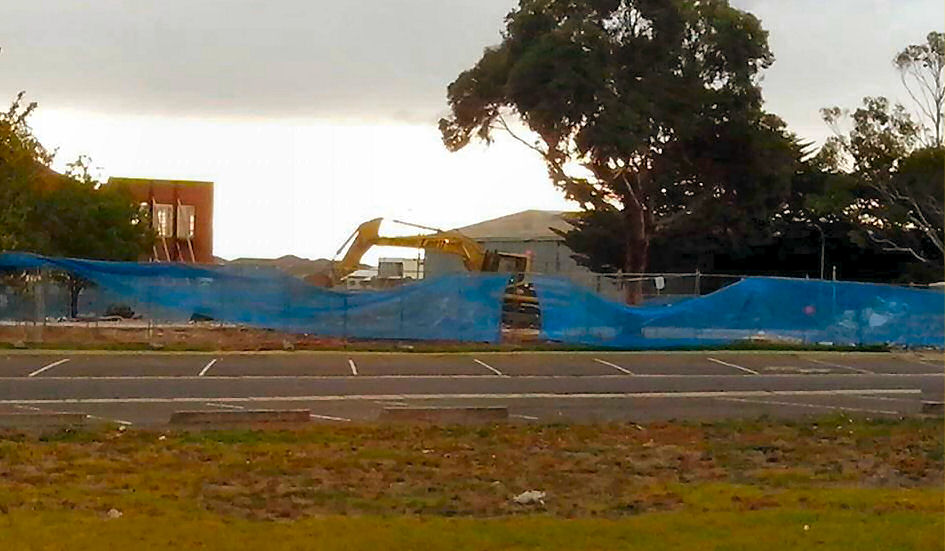|
|
||
|
||
|
Privacy Policy | Editorial Policy | Profit Policy | Join the Association | List of Members | Contact us | Index | Links |
||
|
Back Go to page: 1 2 3 4 5 6 7 8 9 10 11 12 13 14 15 16 17 18 19 20 Forward
|
||
|
|
||
|
Dead Mirages.
Kev Rosser sent us these pics of a dead Mirage which he says is (was??) near the back fence at Darwin.
|
||
|
|
||
|
|
||
|
|
||
|
|
||
|
Memories of Iwakuni 1951/3
Arthur “Gus” Comer remembers: “In October 1951, I took over the Base
Squadron Radio Workshop from WOff Stan Wilson. The radio gear in the
tower, the HF/DF station, and the Base radio station, were
L-R Minoru Yoshimori, our storman/clerk, Jiro Tsushima & Toshio Uemura, Japanese trained Telecom technicians, with Tamiti Muranaka on the right. Jiro and Toshio were very skilful, hard working chaps.
In the other pics, the local radio station studio desk, In the top
picture, the old AR7 receiver, which was used to bring in the news from
Radio Australia each evening at 1900 local time. The whole thing was
rebuilt during my time there, new control console, and a new receiver,
Hammarlund Super-pro 88,
I think. Reception from RA was perfect in the evenings. I had my own
short-wave receiver in my quarters, a Pye PCR-2, on which I used to
listen, not only to RA, but also to Victorian Home Service Short-wave
transmission form VLH-15 Lyndhurst, on 15, 220 kHz. I could listen to
VFL matches on a Saturday afternoon, a real thrill when so far away.
At one stage we had a problem with a microphonic valve in the radio studio amp, conversations could be heard on the broadcast, even with the mic turned off. After a lot of hunting around I replaced the first pre-amp valve with a VHF triode and the problem ceased. The station, WLKU, nominally on 1422, was actually two or three kHZ off frequency. We didn’t have the correct crystal for 1422, W. Off Bernie Ferguson had ground down a lower frequency one, but had gone a bit too far. The resultant transmission produced interference with other Japanese stations on 1422 all over southern Honshu.
In the workshop when I arrived there was a very large bottle, possibly around ten litre capacity, and extremely heavy, of Carbon Tetrachloride (CCl4), a much loved cleaning agent in those days. But the contents of this bottle were a dirty brown colour, looked like someone had washed his socks (or boots) in it. I decided to distil the colourful liquid. With the aid of one of the Japanese chaps a still was built, to be heated over an electric element, with a length of copper tubing carrying the distillate to a new bottle.
It worked well for a time, but then a leak developed and the coiled electric element was covered in CTC vapour, disintegrating almost instantly. The white vapour, a cloud several cm high, flowed along the top of the workbench, rolled off the end, and dispersed across the floor. My Japanese staff, sure they were about to be gassed, were huddled in the far corner of the workshop! If only I had had a video camera! But the distillation effort had given us a (smaller) bottle of usable CTC.
A very happy fifteen months ended in Jan 53, when I returned to 1AD”.
ON THIS DAY – 16 Apr 1988.
The RAAF’s permanent presence at Butterworth ended.
The 30-year permanent presence of RAAF fighter units based at Butterworth, Malaysia, ended with a special ceremony on this day. In future, the Australian presence would comprise a detachment of P-3C Orions, an Army rifle company (changed over at three-month intervals), and regular rotational detachments of F/A-18 Hornets sent from Australia. The parade to mark the new arrangements was attended by Australia’s Defence Minister and the Secretary of the Department of Defence, along with the Chief of the Air Staff, Air Marshal Ray Funnell.
Malaysia was also represented by its Defence Minister and the Chief of the Royal Malaysian Air Force. As RAAF and RMAF airmen paraded with their respective bands, there was a symbolic flypast of Mirages leading F/A-18, F-111 and P-3C aircraft. Spectators included six former Commanding Officers of Butterworth, from when it was a RAAF base before 1970, who were flown from Australia especially for the occasion.
|
||
|
|
||
|
|
||
|
I almost had a psychic girlfriend ... but she left me before we met.
|
||
|
Madang.
Herc, Canberra and/or Caribou crews who flew in PNG in the 1970's would have spoken with one of these blokes while overflying the FIA or landing at Madang or at one of the outer airfields. These blokes worked for DCA, as it was back then, and every now and then they get together to remember the wonderful times they had or to reminisce the far too numerous incidents/searches they were involved in when young inexperienced pilots pushed the bar just that little bit too far.
|
||
|
L-R: Brian Carroll, Trev Benneworth, Bob Taylor,
Peter Gorta, Jim Finnigan, Peter Davey.
|
||
|
|
||
|
21 Radmechs Course Ballarat. 1960.
|
||
|
|
||
|
Back Row L-R: John Archer, J Randle, Bill Scheske, Phil Burrill, Tony Bucci, Bill Thomson, John Thompson, Kel Martin. Middle Row L-R: Phil Mole, Neville Mackay, Jeremiah Cleary, Peter MacNamara, Neville Stark, Allan Thompson, Bruce Hurst. Front Row L-R: John Dare, Bernie Radel, Geoff Waugh, Laurence Cook.
|
||
|
|
||
|
RAAF Ballarat.
The former Ballarat RAAF Base on the site of the present Ballarat Aerodrome, 7 km northwest of Ballarat city centre, was constructed in 1940 at the outset of the Second World War as a training school for Wireless Air Gunners under the Empire Air Training Scheme (EATS). The Scheme was established by the British with Canada, Australia and New Zealand to rapidly train air crews for the British Bomber Command to fight the then far superior German Air Force. Under EATS which operated from 1939-1945 the RAAF was committed to training 28,000 aircrew over three years including navigators, wireless operators, air gunners and pilots, equating to around 900 aircrew every four weeks. To achieve this the RAAF embarked on a rapid and extensive program establishing a network of 28 EATS schools in eastern Australia by the end of 1941, each specialising in specific skill sets required of air crew members. The former Ballarat RAAF Base was Australia's No.1 Wireless Air Gunners School (WAGS), the first of three WAGS created under the Scheme and the only one in Victoria.
By 1941 there were nearly 800 personnel on the former Ballarat RAAF Base
and by the end of March 1942 a total of 1238 air men had been trained in
the operation of radio equipment and guns using Avro Anson
In consequence of the United States declaring war on Japan in Dec 1941 a strategic alliance with Australia was formed and in 1942 the Base at Ballarat was extended to accommodate a Liberator Bomber Squadron to assist in the prosecution of the Pacific War and in the strategic defence of Australia. The US forces camped immediately south of the residential area of the Base where they constructed the Liberator Air Strip for use by their B24 bombers, large planes for the long range bombing missions required in the Pacific. By 1943 there were 80 United States aircraft at the base.
The Wireless Air Gunners School was formally disbanded in January 1946. The RAAF continued to operate the aerodrome until 1961 when it became the property of the Ballarat Council. The Ballarat Aerodrome continues to operate as a civil airport and the surviving Second World War structures on the site provide accommodation for a large number of community organisations including an aviation museum.
The surviving Second World War structures associated with the WAGS are
primarily 'P-Type Huts' and Bellman Hangars neither of which were
originally intended to be permanent structures. They were erected in
response to the sudden and urgent need for semi-permanent accommodation
for service personnel and for aircraft hangars, having been
prefabricated and erected at the beginning of the Second World War on
military sites throughout Australia.
The P-Type Huts, consisting of a simple timber and corrugated iron box with a gabled roof usually with doors at each end could be easily modified as required for particular functions. By 1941 approximately 160 standard P-Type Huts had been erected on the Ballarat site in two distinct functional precincts. In the northern aerodrome precinct around fifteen huts, of which twelve survive, were arranged on the outside of a group of four Bellman hangars arranged in pairs a few metres apart. Bellman hangars had been designed in Britain immediately prior to the Second World War to provide a fast, economical solution to the need for aircraft facilities.
The Ballarat Aerodrome was included on the Victorian Heritage Register in 2007.
John Dare, who was on 21 Radio Mechanics in 1960, sent us these pics.
|
||
|
|
||
|
The road into Ballarat – 1960.
|
||
|
|
||
|
Berry Reserve – RAAF Ballarat 1960.
|
||
|
|
||
|
Headquarters RAAF Ballarat – 1960.
|
||
|
|
||
|
Jerry Cleary and his Ford Consul. 1960.
|
||
|
The Ford Consul was launched at the 1950 Earls Court (UK) motor show and went into production in 1951. It featured an all new 1508cc overhead valve engine which produced a whopping 35 Kw (47 bhp) at 4400 rpm. It was also the first Ford along with the new Zephyr introduced at the same time, to use MacPherson strut suspension on the front. Convertible versions were produced by Carbodies of Coventry and a Station Wagon version was also developed. Production ended in 1956 when the Mark 2 version was introduced.
Like a lot of vehicles built back then, it had a manual 3 speed column gear change (3 on the tree) with synchromesh on 2nd and top only. It had a top speed of 115 kph (72 mph) would dash from stop to 100kph in 28 seconds and would cover 26 miles for every gallon (9l/100klm) of fuel burnt. (The current Ford Fiesta, with a 1000cc engine develops 92Kw (125hp) and uses 4.9 l/100klm).
|
||
|
How do you tell when you're out of invisible ink?
|
||
|
Professional Lunchers.
Spotted recently at one of Brisbane’s better restaurants were 4 old boys hard at it keeping up the good work. Lunching is definitely not for the faint hearted.
|
||
|
|
||
|
L-R: Jeff Pedrina, Trev Benneworth, John “Sambo” Sambrooks, John McDougall.
|
||
|
More professional Lunchers.
Spotted recently at the Maroochy RSL.
|
||
|
|
||
|
L-R: Trev and Sheryl Benneworth, Carol Jewell, Laurie Lindsay, Kev Carroll.
|
||
|
Three old radio blokes having a leisurely lunch, normally you would think the conversation would stray onto important stuff like capacitors and resitters, but no! the girls insisted the conversation steered very clear of all that. One bloke though (no names, no pack-drill, but his name wasn't Kev or Trev) reckoned he was a pretty good Radtech in his day though it seems modern technology has caught up with him as we’ve since discovered he can’t tell the difference between a CD and a 5¼ in floppy disk.
Oh well!!
|
||
|
Ambition is a poor excuse for not having enough sense to be lazy.
|
||
|
RAAF Fire Tender, Point Cook, 1938.
|
||
|
|
||
|
|
||
|
RAAF Police – Laverton, January 1987.
|
||
|
|
||
|
Standing L-R: Mal Cooke, Brian Scharper (BJ), Flt Lt Bernie Farley, Woff Ian (Bushie) Walker, Dave Sharpe. Bottom Row L-R: Mark Davis, Blue Archer (Deceased), Nev Hewlett, Steve Weidermann, Luke Birch.
|
||
|
Sergeants’ Mess Laverton.
On the 11th October, 2014, the Sgt's Mess at Laverton had its last night of trading and in March 2015 it was demolished. The senior NCOs and Officers now share the old Officers’ Mess.
Sad!
|
||
|
|
||
|
|
||
|
I intend to live forever. So far, so good!
|
||
|
|
||
|
|
||
|
Back Go to page: 1 2 3 4 5 6 7 8 9 10 11 12 13 14 15 16 17 18 19 20 Forward |
||
|
|

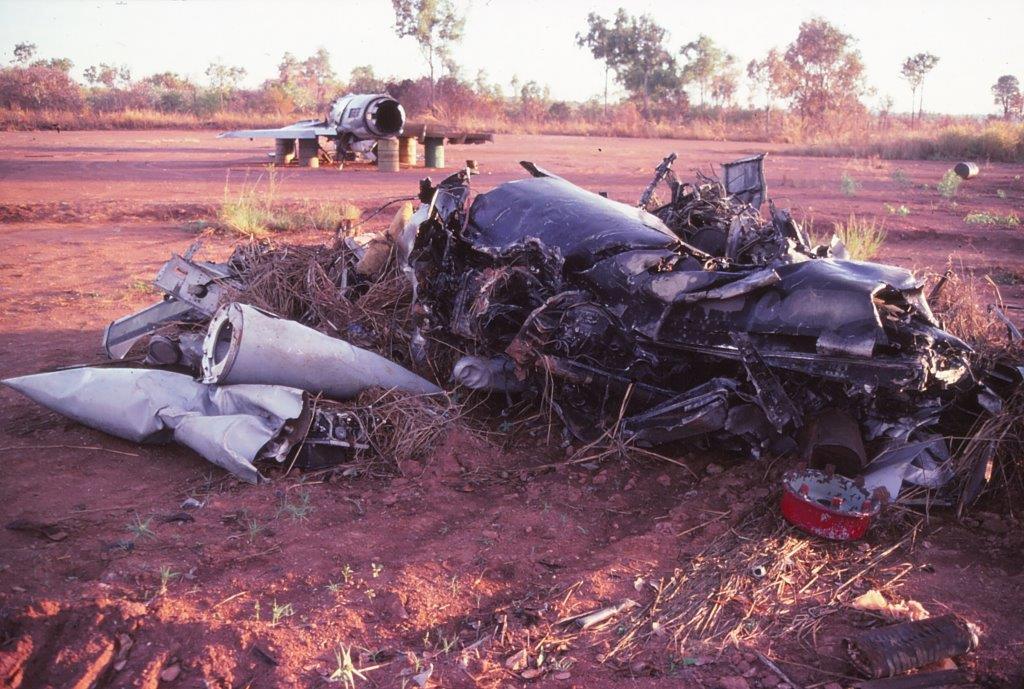
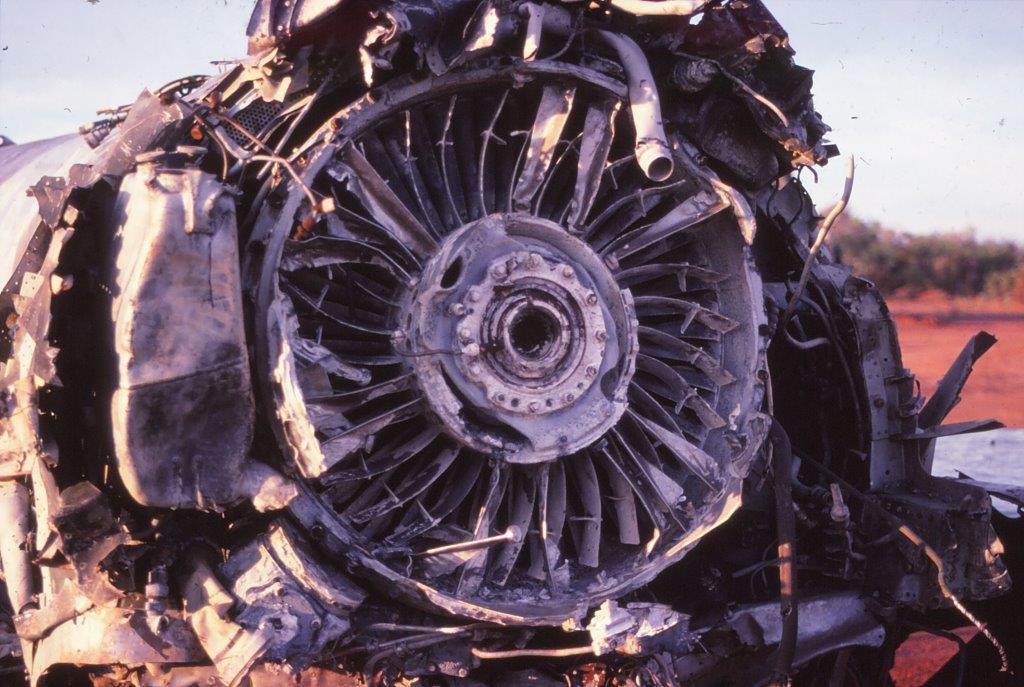
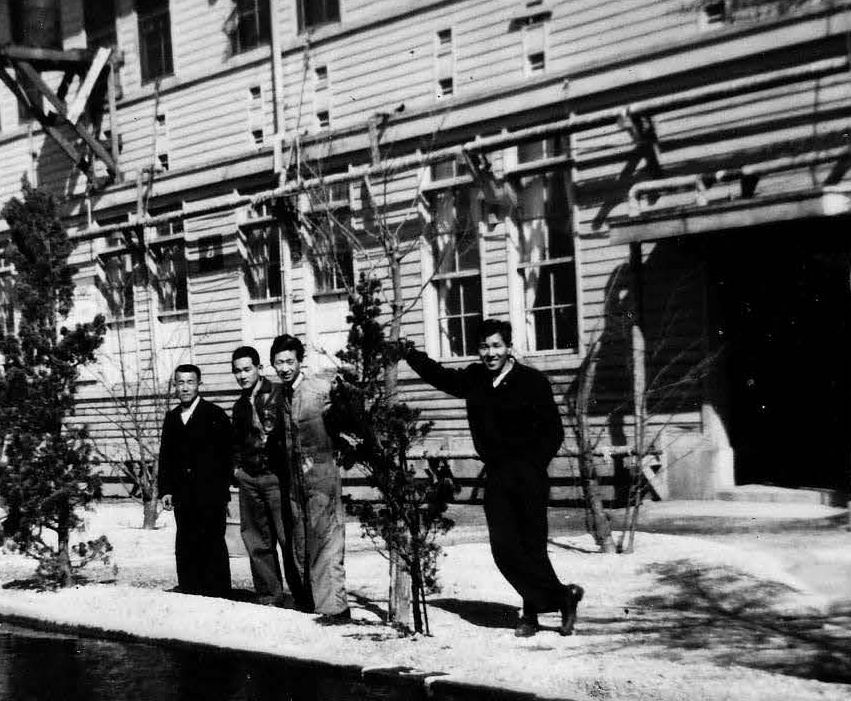 all
my responsibility. I had three Japanese staff, shown in the group
picture with another Japanese employee from another part of the base.
all
my responsibility. I had three Japanese staff, shown in the group
picture with another Japanese employee from another part of the base.
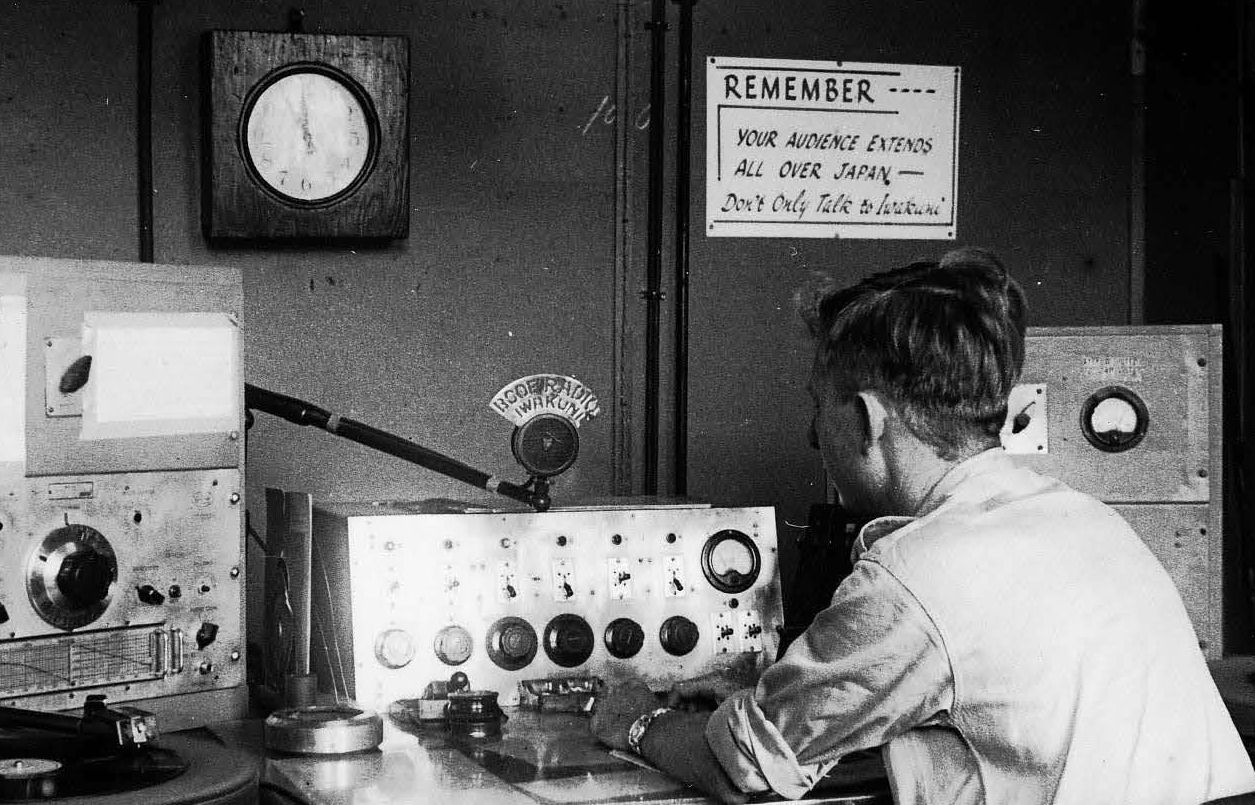
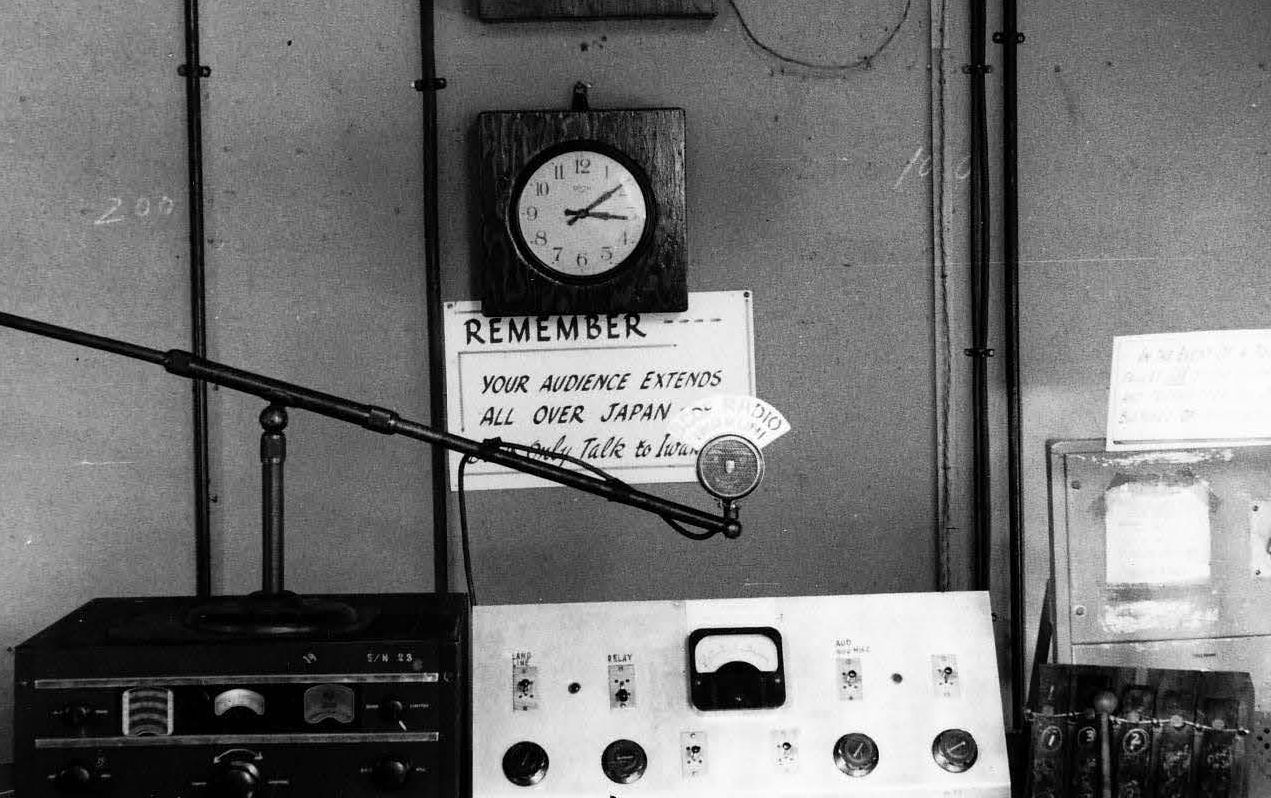
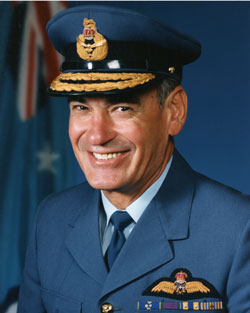
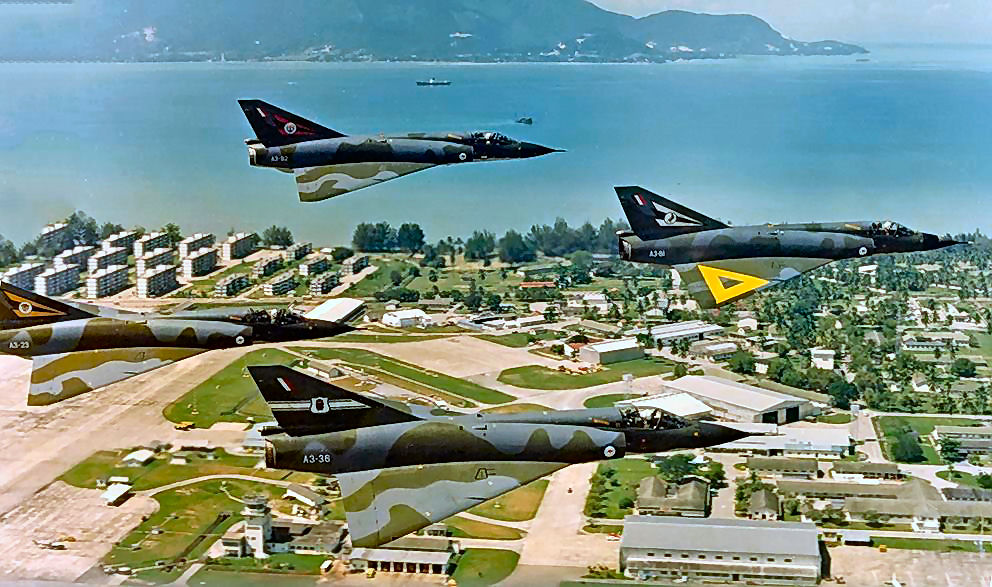
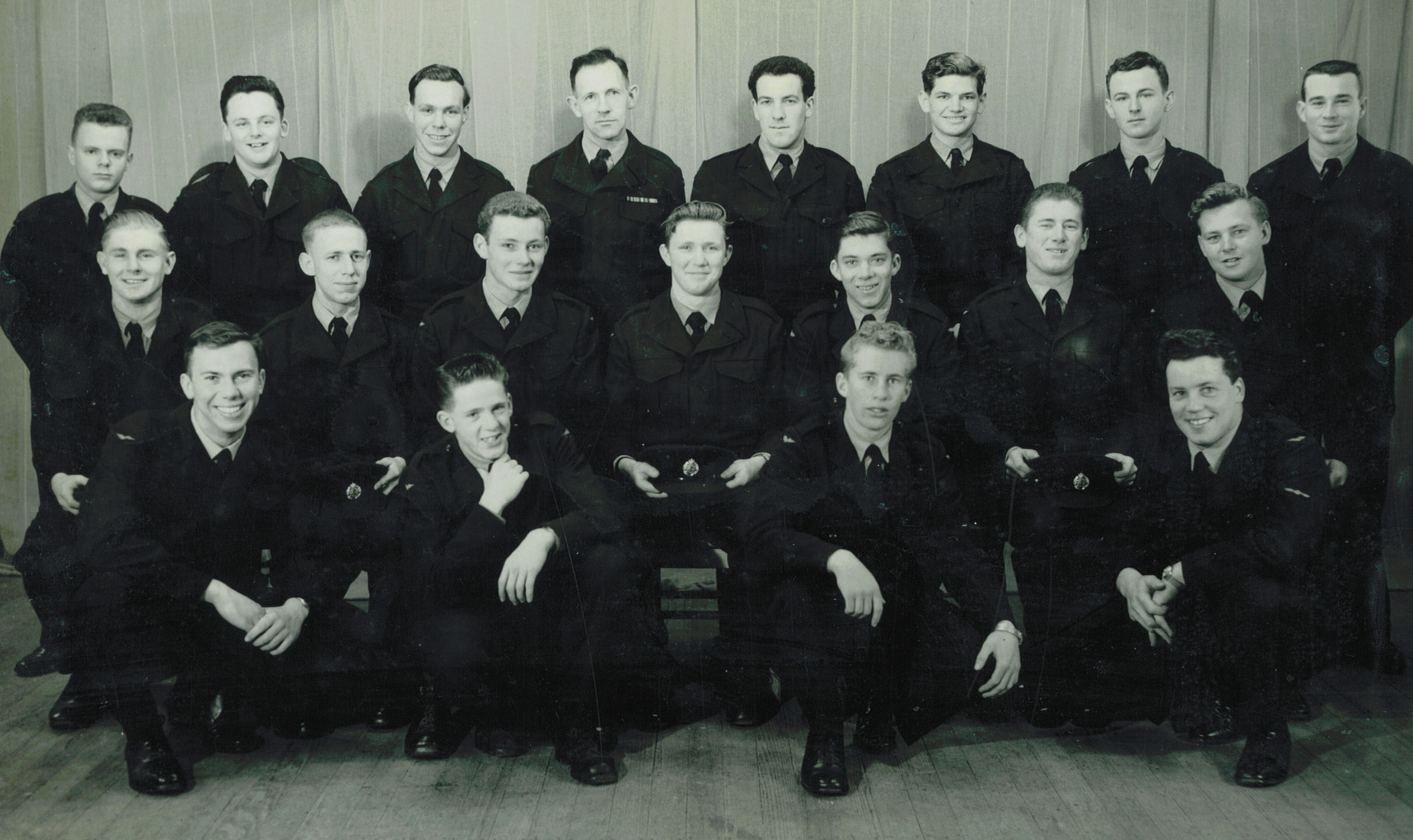
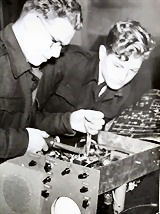
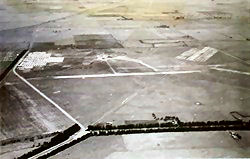 and Wackett
aircraft. A radar training wing was also established at the former Base
in 1945. Basic training for wireless operators ceased in May 1945 by
which time 5025 trainees has been through the school.
and Wackett
aircraft. A radar training wing was also established at the former Base
in 1945. Basic training for wireless operators ceased in May 1945 by
which time 5025 trainees has been through the school.